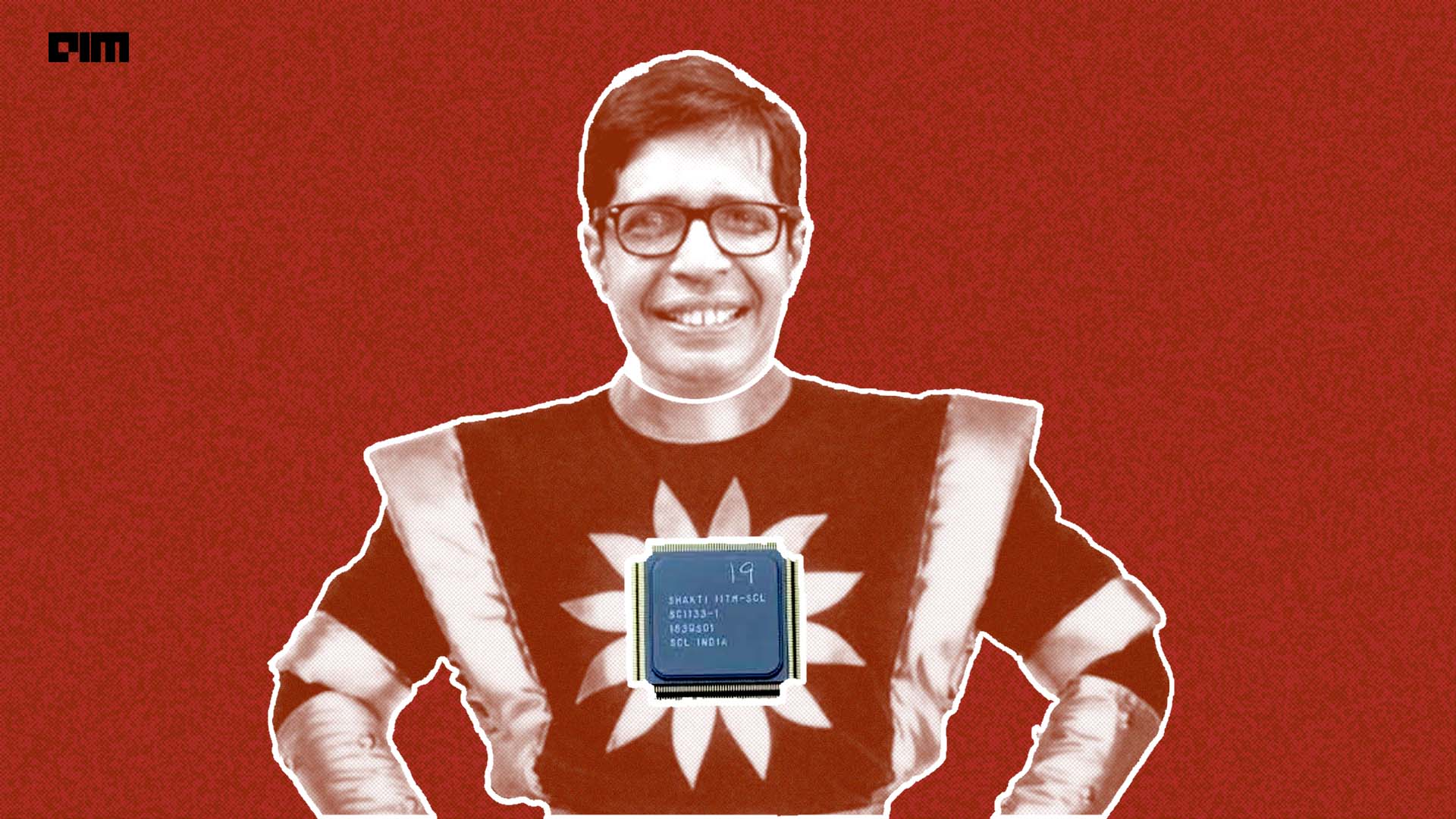
The SHAKTI-man of India, Veezhinathan Kamakoti, director of IIT Madras, has had a hectic few years. The genius behind India’s first microprocessor has been trying really hard to build semiconductor capabilities in India, and put a stop on cheap imports from China. “This is something which we have achieved over the last 10 years and I have completely given up every other thing to work for SHAKTI,” he told AIM in an exclusive interview.
Kamakoti started building the SHAKTI microprocessor in 2014, an open processor built on top of the open RISC-V architecture, which is funded by the Ministry of Electronics and Information Technology. He said that there is a need for building hardware that supports building AI models within the country, which led him to take the charge with the SHAKTI microprocessor.
Humble Kamakoti has been emphasising for the last few years to increase the investment into semiconductor startups, which is still a very risky area for many VCs.
“I am only Saraswati, not Lakshmi for these startups,” Kamakoti said that there are five companies coming out of the IIT Madras lab: Incore, Mindgrove Technologies, Chakra Electronics, Vyoma Systems, and SecurWeave, and all of them are building on top of SHAKTI core, but he is only the mentor for these companies, “It is very interesting to see that we have an indigenous processor ecosystem in India,” he added.
Building trust for the chip
Ever since completing his first course in AI in 1992 from IIT Madras, Kamakoti has been finding ways to use AI for social good and solving complex problems within India. This led him to eventually start focusing on hardware and led to working on SHAKTI, which is also focusing on edge AI use cases.
Kamakoti said that it is very hard to build trust in the semiconductor business because investors need to have full trust when investing in these startups. “Though the government is providing full support for improving the semiconductor industry in India, investors are still hasty and cautious when it comes to investing, as it is very costly, and cheaper alternatives are always available. We are now closing the gap,” he added.
“Today, Shakti C class is very stable and we have made multiple chips with it. We are ready to give to startups as well, which is not a joke,” said Kamakoti highlighting that they are making it open for everyone for democratising processor based SoC (system of chips) design in the country.
“Unlike a software company which has a cloud and is developing a software solution with demos, hardware startups take a lot more trust and investment, which the government is promoting, but we need a lot more VCs to take interest as well,” Kamakoti emphasised.
BharatGPT can be the Copilot for India
Kamakoti was the chairperson of the AI Task Force, which was constituted in 2016 by the Ministry of Commerce and Industry. The AI Task Force report highlighted how AI can be used as an economic transformer for the country. Apart from this, currently he is also a crucial member of the BharatGPT initiative, which was started by IIT Bombay.
Highlighting specialised hardware for every field including IoT, network processing, and computing, Kamakoti said that it is also essential for LLMs to be built and catered for specific domains. He believes that this is where BharatGPT is going to play a crucial role. “The initiative requires validation from experts from every domain, and that is what BharatGPT stands for,” he explained.
Giving examples of training small models for the legal field or medical field and how they can assist professionals in the field, Kamakoti said the open source approach of BharatGPT will help it become the copilot for different domains. “It is not a search engine, but a technology that is doing a lot of NLP, and giving you contextual output,” which he believes would help people approach every field with a lot more confidence.
Reflecting on how there are thousands, if not millions of documents in Indic languages, it is the need of the hour to extract knowledge from them, including historical facts and science. “For example, there is some proof that Newton’s laws were present in our ancient texts at least a 1000 years ago,” and this can benefit the whole of the world.
“LLMs are like faithful kids”
Talking about generalised models like ChatGPT and Bard, Kamakoti said that LLMs are like faithful kids, “if you give them relevant data, they will do exactly what you want them to.” He said that there is a dire need for data scientists and to focus on extracting and gathering information for tokenising these Indic models.
“This would obviously require a lot of money and compute,” highlighting his love for farming, Kamakoti said that while we are also talking sustainability with AI models, they are also very necessary for helping various sectors such as agriculture. “There is a lot of knowledge hidden in rural India, which needs to be brought out,” he added, highlighting that every field, even within the same domain, requires different amounts of data.
Focusing on the recent funding of INR 110 crore from Sunil Wadhwani to IIT Madras for building a school for AI and data science, Kamakoti recalled that a reporter asked him if the same money could instead be spent on building 10-12 schools in India. To which, he replied, “I can use AI to enhance the capabilities of the teacher. I don’t want to replace the teacher, but augment them, in the end creating a very good copilot,” Kamakoti concluded.
The post The SHAKTI-Man of India appeared first on Analytics India Magazine.